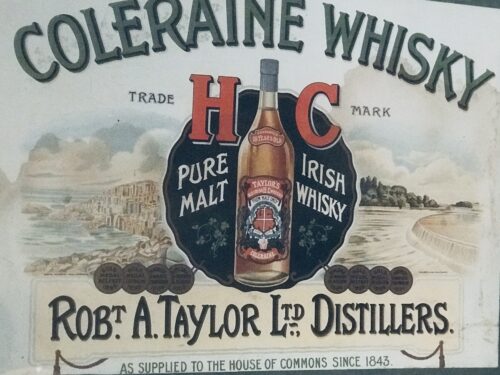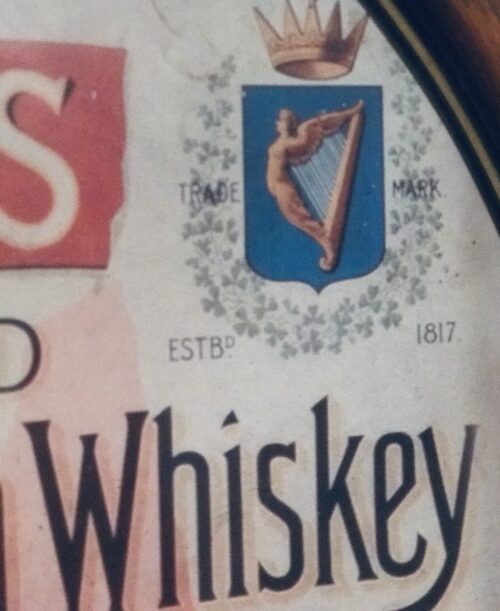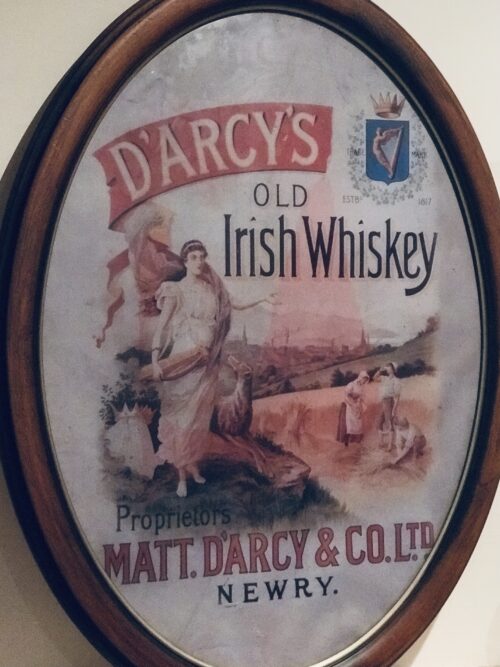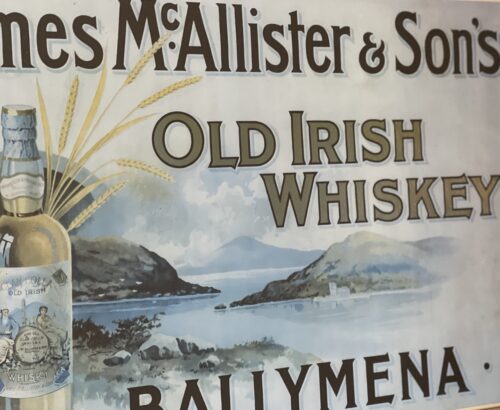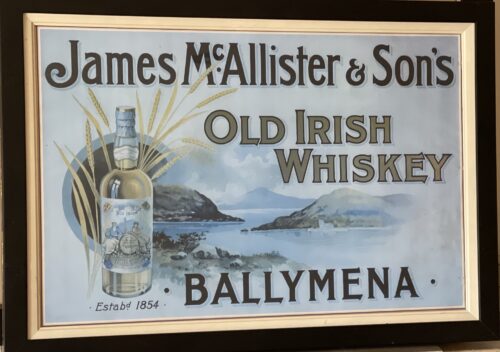Absolutely stunning Dunvilles mirror, estimated to date from the 1880s.Although the paintwork is somewhat worn, this mirror is a real collectors item and has been mounted on a larger oval shaped mirror with a gilded frame to accentuate the beauty of the original piece.
55cm x 50cm
Dunville & Co. was a tea and spirits merchant company, based in
Belfast,
County Antrim. The company initially gained success as an
Irish whiskey blender, but later produced and marketed its own whiskey, having constructed its own distillery. The company was founded by John Dumvill who joined William Napier of Napier & Co. The spelling of Dumvill was changed to Dunville and in 1825 the company name became Dunville & Co. In 1837, Dunville began producing its most popular whisky
Dunville's VR.
Dunville's was the main brand name of Dunville & Co, and was used in advertisements, on pub windows and pub mirrors such as the beautiful example featured here on the irishpubemporium.com and on whisky dispensers, water jugs, trays, match strikers, ash trays and playing cards.
Although Dunville & Co was established and based in Ireland, before the
Partition of Ireland, and Irish whiskey is normally spelt with an 'e' in 'whiskey',
Dunville's Whisky was always spelt without an 'e' in 'Whisky'.
In 2013, almost 80 years after the last Dunville's was distilled, the Echlinville Distillery revived the Dunville's brand, and began distilling at their facility in the
Ards Peninsula.
Previously they had purchased spirits from other distillers and aged it themselves. Dunville's VR Old Irish Whiskey and Dunville's Three Crowns Irish Whiskey from
The Echlinville Distillery came on the market in 2016.
Having gained success as a whiskey blender, Dunville & Co. constructed their own distillery, the Royal Irish Distilleries, on the edge of Belfast in 1869. When built, the distillery occupied an impressive four-storey red-brick building, and was amongst the most modern in Ireland.
With production from five
pot stills, and later a
Coffey still, at its peak the distillery had a capacity of over 2.5 million gallons per annum, making it amongst the largest in the country.
Much of the distillery's output was used in the company's whiskey blends,
Dunville's VR and
Dunville's Three Crowns.
Although, like other Irish distilleries,
Prohibition caused Dunville to lose access to the important American market, Dunville ended the 1920s in good financial health. However, when the last heir and chairman of Dunville, Robert Lambart Dunville, died in 1931, the company began to flounder, and left to its directors, in 1936 Dunville & Co. was liquidated.
Incredibly, and almost uniquely amongst the Irish distilleries that closed in the 20th century, liquidation was not forced upon the firm, as Dunville was actually still profitable when it was wound up.The main brand name of Dunville & Co. was used in advertisements, on pub windows and pub mirrors, and on whisky dispensers, water jugs, trays, match strikers, ash trays and playing cards.
Although Dunville & Co was established and based in Ireland, before the
Partition of Ireland, and Irish whiskey is normally spelt with an 'e' in 'whiskey',
Dunville's Whisky was always spelt without an 'e' in 'Whisky'.
In 2013, almost 80 years after the last Dunville's was distilled, the Echlinville Distillery revived the Dunville's brand, and began distilling at their facility in the
Ards Peninsula.
Previously they had purchased spirits from other distillers and aged it themselves. Dunville's VR Old Irish Whiskey and Dunville's Three Crowns Irish Whiskey from
The Echlinville Distillery came on the market in 2016.













